Part 2 – La Gonâve, Haiti - A Vision of Regeneration for a Degraded Land and Impoverished People
Jean Rony Toussaint grew up on Chien Content (Happy Dog). You can see him here at his childhood home, where his parents still live.
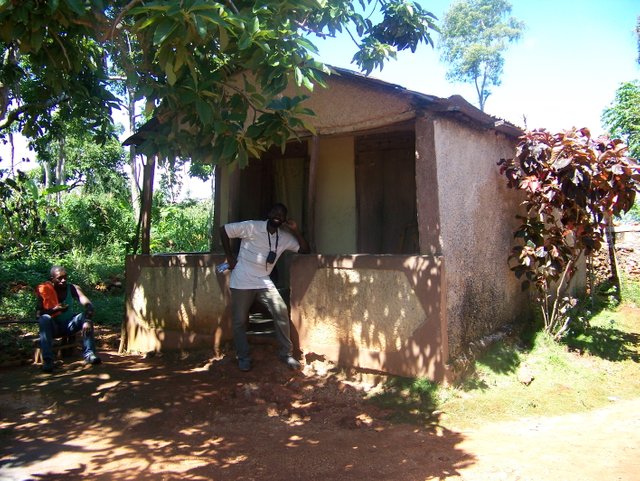
We met his father (Dezil Toussaint) working out in the field as we walked across Happy Dog. Before us stood a man bent from decades of working the land and full of smiles with what few teeth have stood the test of time. When I asked Jean Rony how old his father was, he turned and asked. His father responded that he really wasn't sure, but maybe 100 years.
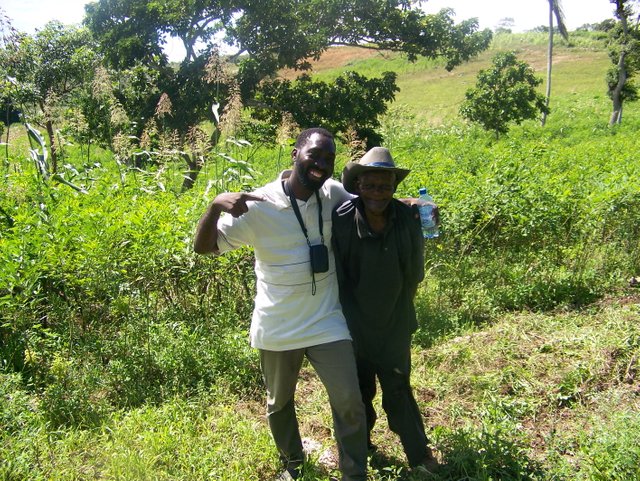
Jean Rony beams when he talks about his mother (Lormicia Destin). If you ever get to meet her you'll see why. I think she had more energy than the two of us put together, and was one of those people that just seems to overflow with joy.
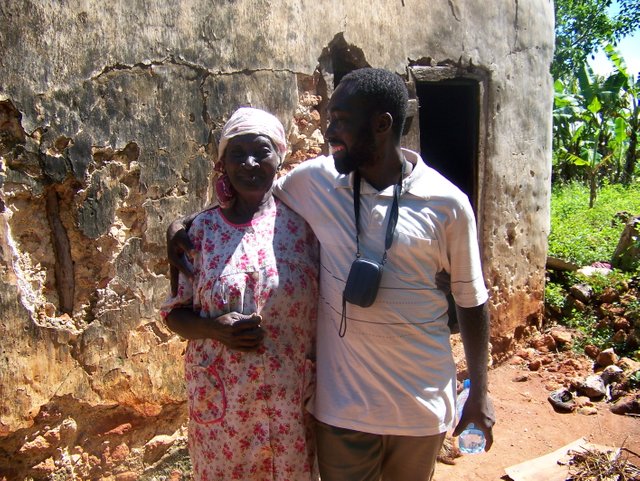
His family owns a decent sized piece of land on the top of Happy Dog, though probably less than 50 hectares. Attempting to figure out where property lines are is quite a challenge, as you can imagine. The thing is, I don't think they really care that much. They plant where they want to and eat off the land.
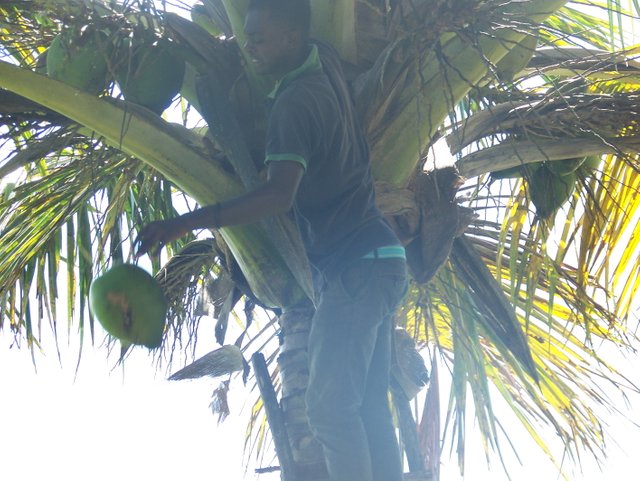
For the first time in my life, I was treated to some fresh coconut, a welcome treat in the tropical afternoon. While I love the smell of coconut, I've never really been a fan of eating it. The texture just isn't for me. And I'd never had fresh coconut water, so didn't know what to expect. The flavor was good, though not something I'd rave about. But it was very refreshing.
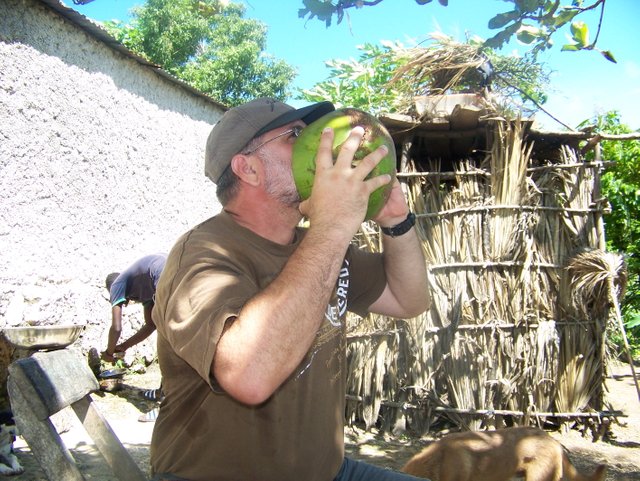
It was the texture and flavor of the flesh of the coconut that surprised me. Rather than fibery like we get from stores, it was almost like a firm jello. The flavor was mild and pleasant, but the texture was really quite delightful.
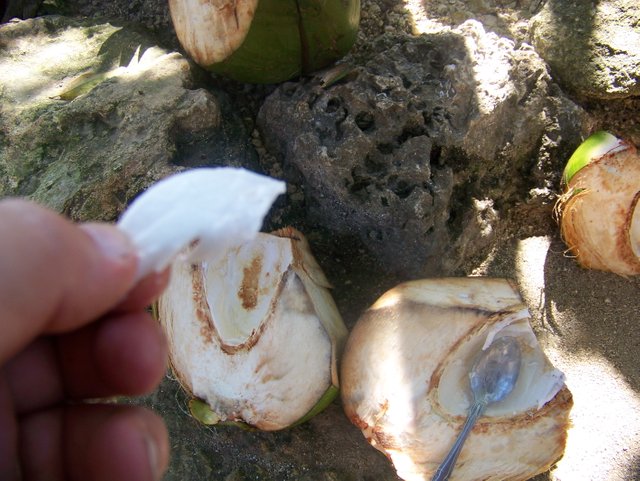
After a refreshing break for body and mind, we hiked around to survey some of the land Jean Rony had grown up on. The particular area we walked had been cleared many years before, now being taken over by guava (psidium guajava) that was growing rather thickly. Not all guava is created equal, and these were some of the less equal variety. While they were plenty juicy and would do when hungry, they were quite bland and the seeds hard.
Again, it was the land that struck me. Some bare rock was showing, but that could happen anyway up here at the top of the mountain. It was evident that the guava was growing as a pioneer though, along with some other shrubs I don't know the name of.
Back to the Land
Once the land is set on a degenerative course, the only way to turn it around is through aggressive holistic management. Many think that we can just stop doing what we're doing and nature will restore it. In some ways, that's true. But in others, it's not.
Much depends on the environment. In a particularly resilient environment, the land might bounce back fairly quickly. In a brittle environment, it might take thousands of years. In most cases, at the very least, it'll take centuries. Even then, it'll never be the same as it was before it was set on a path of degradation.
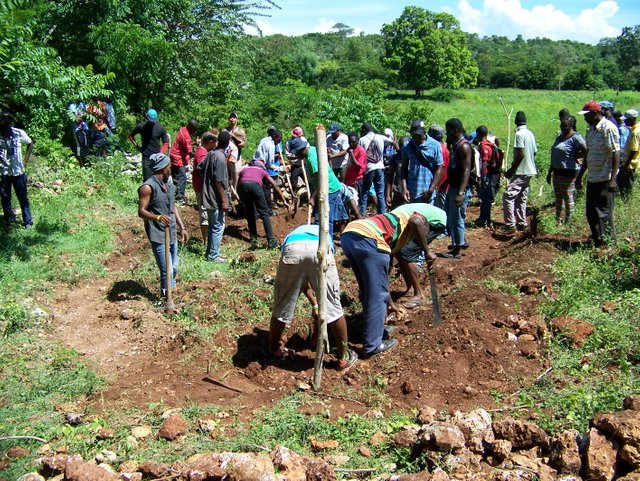
In order to really improve the land, its fertility and its production, and get it set on a regenerative course, good holistic management must be pursued aggressively. This isn't super hard, but it does require a lot of hard work, vision, knowledge and persistence in its pursuit. Once set in regenerative motion, as the land matures the requirements for maintaining it diminish.
Grazing
In some of my pictures you’ll see cattle or goats, with a pig here or there. These grazers are a mixed blessing, depending on how they’re managed.
Many blame the grazing of cattle for degradation of the land. On one hand, it’s true. Cattle, when allowed to roam freely, without pressure to move, will pick and choose what they want and nibble it to nothing, wiping out the grasses and bringing on a destructive cycle of degeneration. Any grazer will, though some are less selective than others.
However, this isn’t because there are cattle. A rangeland left on its own for years, without any grazing pressure, will only regenerate for the first few years. It will never reach its potential, and may actually begin to degenerate again.
This is because grasslands do best when ruminants move across them. But that pressure needs to be in the form of a herd moving through in a mob, like they used to before fences kept them in one place and most predator populations had been drastically reduced.
Grasses grow fastest in-between first growth and when it puts forth seeds. At first it’s establishing roots, so puts its energy down into the soil. Then it shoots up, putting all its energy into growing. Once it reaches its potential (which varies with soil conditions and water availability), it puts forth seeds. It is during the middle part that it has the most nutrients, so is most healthy for grazers. It will also grow back fastest when grazed at this stage.
The problem is, when grazers are allowed to eat at will, they’ll eat what they like most right down into the roots, and methodically do so throughout their landscape. But if you concentrate your herd and move them through sections at a time fast enough, they’ll eat what they can, trample some, disturb the soil a bit and leave a nice blanket of litter complemented with one of the best fertilizers on the planet. While the grass is “damaged”, it is resilient and will spring back up after the mob has done its work. None of it will be eaten down to the soil. What doesn’t bounce back adds to the biomass of the soil, increasing its nutrients as well as its water holding capacity.
By using this method, grasslands have been restored and become more lush than anyone can remember them being. The grazer complements the growth cycle and produces a far healthier grassland than could ever be attained without them. But they must be moved regularly (daily is common, or even every few hours in some more aggressive cases), and not allowed to return to that pasture for months. This next image is from a video put out by Circle Ranch in Texas, of a fence line between a field where cattle roam freely and one intensely managed. You can see that one is full of creosote while the other has a lot of grasses.
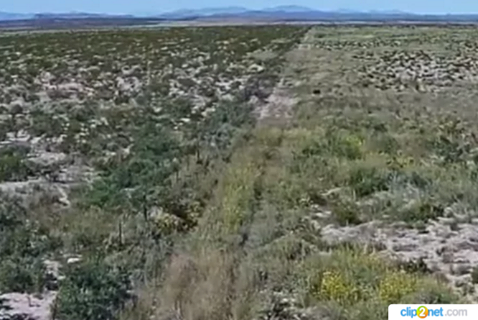
The technique has been used by many, but has more recently been popularized by Joel Salatin. He’s found that doing this has also increased his soil so much that areas that were bare rock are now being covered with grasses and topsoil.
Another expert in this area is Allan Savory. He published a report that elephants were destroying savannas in Zimbabwe, Africa, many decades ago. This resulted in the extermination of 40,000 of these magnificent animals. All the self-proclaimed and credentialed gurus at the time were baffled when the savannas continued to degrade. His analysis was correct, in light of what universities were teaching. But nature doesn't bow before professors, and it turned out that what they taught was completely wrong. Without herds, the grassland might survive, but couldn't thrive.
Erosion
Bare soil is always degenerative. There is no exception. Whether it's sun, wind or rain, they're all taking their toll on the microbiology, viability and even quantity of the topsoil.
When a land is stripped of its canopy or other ground cover, one of the first victims is the topsoil. Many don’t realize that most farmland in the US has lost many tons of topsoil per acre. In some more lush areas, such as Virginia's Shenandoah Valley, it’s estimated that as much as 8’ of topsoil has been lost through erosion, entirely because of ignorant and/or irresponsible farming practices.
But this can be reversed through implementing more complementary planting routines, the use of more perennials, regenerative earthworks, designing on contour and possibly keyline structure and focusing on the health of the soil through the incessant development of biomass. This often includes the intensive management of livestock.
A lot of what you take for granted as being bare soil today was once covered in vegetation. Even much of our desert land in the American Southwest once had more diversified flora and sweeping grasslands. When driving across the desert we see vast expanses of creosote. While it's a wonderful bush, and provides the desert with an incredibly delightful scent when it rains, it's expansion is a sign of degradation. It is a pioneer species, meaning that it fills the gap to cover the soil where other species have been eradicated. As a pioneer, it's one of the first to move in.
It’s almost a given that where you have erosion you’ll have gully incising and headcuts. An incisement is where the gully has cut deeply, rather than continuing to build banks. This is caused when runoff is too fast, shooting through the gully and causing massive erosion. As you may have guessed, this happens most when the vegetation has been stripped from the land, just like with topsoil erosion, because there’s nothing to catch the water. Such speeds tear through the naturally healthy meanders, resulting in a canyon effect that is degenerative for the entire landscape.
This image is the result of what happens in such a situation, even on an island. In the foreground is the road, the only paved road on the island (about a mile long). Where this ravine is, it's been completely washed out. The power of the water is simply too much for the road to withstand. More than likely, when the road was originally built the stream was more healthy and less likely to flood.
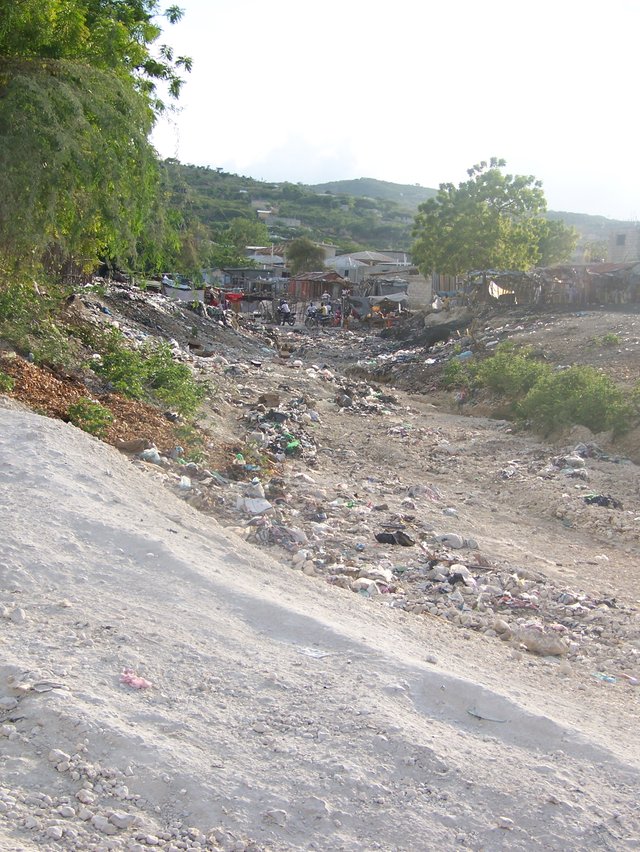
As the water begins to be pulled into the gullies, the flow from the slopes becomes more concentrated and begins to wear channels as it gets closer to the gullies. Then, because the gully is incised anyway, the drop into the gully begins to cut uphill, which is what we call a headcut. You may have seen this degeneration in various areas in your travels, as it’s very common today. These cuts will continue travelling upslope until they reach a barrier or get close enough to the top that there isn’t enough water flow to continue its progress.
We'll discuss hydrology in more detail next time, and continue to examine the degradation of this island's natural systems, as well as ways we can turn this in the other direction. The result, if we can pull it off, will be a return to a healthy ecosystem as well as abundance for the precious people of this beautiful Caribbean island.
Steemin' on,
Another Joe

Email notifications
Facebook
Twitter
Interesting post, @anotherjoe. Thanks for sharing! Are you regenerating the island, or just this plot? How did it come to your attention?
Great questions, and thanks for asking. I hadn't thought about the idea that some might think I was just telling a story.
I'll get into how this came about as the series continues. Right now, I don't have the resources to do so. But I have developed a plan that I'll be outlining that could work. Landowners on Happy Dog have already discussed it and like the potential.
My hope is to get there in October and investigate more about what it would cost to really get things going. Ideally, I'd have a videographer with me to help record it and develop a promotional video. But, everything costs. If there's enough, I'll use all the SD from this series to get me there in October.
It's funny what you said about coconut - the texture and not liking it. I've never liked coconut for that same exact reason. It's one of very few things that I just won't eat. However, when I went to the Dominican Republic a few years ago, they grabbed some fresh coconuts off of a tree for my wife and me, chopped it open with a machete, and we drank it. The water was pretty good, but I still didn't eat any of it. We were runnin' and gunnin' with the video cameras, so sticky fingers don't work too well with that.
This is Support n UPVOTES
Like Follow❤️👍👍👍
Haha, the ink hadn't even had time to dry yet. :)
I still can't recover from my UPVOTES
This place is addictive , I am hooked.
Too much Fun here 😋🙊